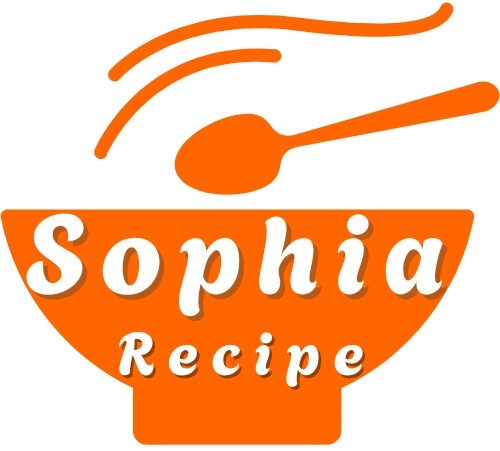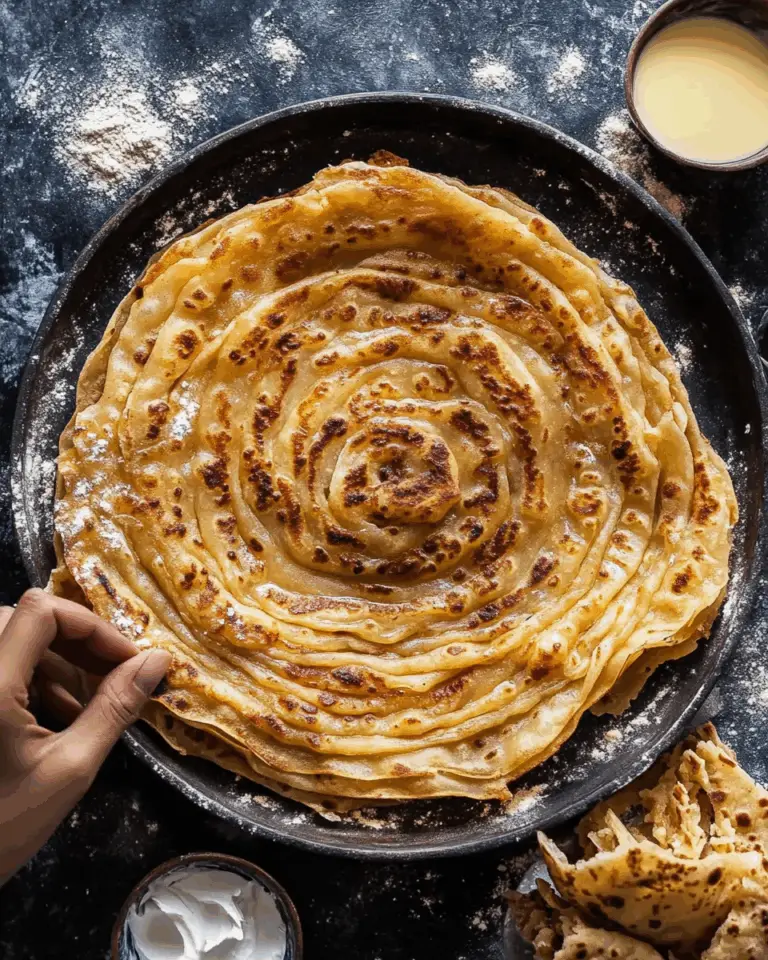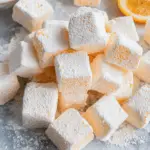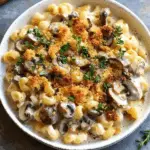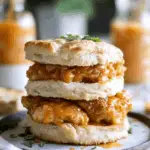Lachha Paratha is a popular North Indian layered flatbread known for its crispy, buttery texture and beautiful spiral of flaky layers. Made with just four ingredients, it’s the perfect upgrade to everyday Indian breads. This version is easy enough for beginners and pairs beautifully with any curry, dal, or even just a dollop of butter.
Full Recipe:
Ingredients
-
2 cups whole wheat flour (atta)
-
½ tsp salt
-
1 cup lukewarm water (plus 1 tbsp extra if needed)
-
3 tbsp melted ghee (divided, or substitute neutral oil for a vegan version)
Directions
-
Make the Dough: In a large bowl, combine flour and salt. Add 1 tsp of ghee and mix with fingers until crumbly. Gradually add lukewarm water to form a soft dough. Cover and let rest for 20–30 minutes.
-
Roll and Layer: Take a golf ball-sized dough portion and roll it into a thin circle. Brush with 1 tsp ghee and sprinkle lightly with dry flour.
-
Create Layers: Pleat the dough from one side to the other like a fan, stretch gently, and roll into a spiral ball. Dust with flour and roll out again into a 5-inch circle.
-
Cook Paratha: Heat a tawa or skillet. Cook the paratha on medium heat until bubbles appear. Flip and cook the other side until golden brown.
-
Final Crisp: Use tongs to cook directly over flame for extra crispiness (optional). Brush with ghee and gently crush between your palms to highlight layers.
-
Serve Hot: Serve immediately with curries or chutneys.
Nutrients (Per paratha — estimated)
-
Calories: ~202 kcal
-
Carbohydrates: 29g
-
Protein: 5g
-
Fat: 8g
-
Saturated Fat: 5g
-
-
Fiber: 4g
-
Cholesterol: 19mg
-
Sodium: 197mg
-
Iron: ~1mg
-
Calcium: ~15mg
-
Potassium: ~145mg
A Flatbread with History and Heritage
Lachha Paratha has roots in the Punjabi and Mughlai culinary traditions of Northern India. The word “lachha” means layers or coils in Hindi, describing the bread’s spiral appearance and layered bite. It is often served in Indian restaurants alongside paneer dishes, creamy lentils, or rich meat curries like butter chicken or lamb rogan josh. Traditionally cooked on a tandoor or flat griddle (tawa), this bread delivers not only on taste but on the sensory pleasure of crisped edges, layered interiors, and ghee-glossed surfaces. Over time, Lachha Paratha has become a staple for both festive meals and everyday indulgence.
A Technique-Driven Recipe That’s Surprisingly Simple
Though Lachha Paratha may look intricate, the process of creating those beautiful layers is accessible even to home cooks. The secret lies in the rolling and pleating technique. After rolling the dough into a thin disc, it’s brushed with ghee and lightly dusted with flour. Then, it is pleated like a paper fan, coiled into a spiral, and rolled out again. This method traps air and fat between layers, which then puff and crisp up during cooking. When cooked on a hot tawa and finished with a final brush of ghee, the result is a golden, multi-layered bread that pulls apart in delicate sheets.
Ghee: The Key to Richness and Flavor
One of the defining ingredients in Lachha Paratha is ghee, or clarified butter. Ghee not only adds a rich, nutty flavor but also helps achieve the paratha’s characteristic flakiness. As it melts between the layers during cooking, it crisps the dough and enhances its complexity. For those seeking a vegan option, neutral oils like canola or sunflower can be used, though ghee remains the traditional and most flavorful choice. Brushing the paratha with ghee both before and after cooking enhances aroma and texture, giving the flatbread a golden sheen and irresistible crispness.
Perfect Pairings for a Complete Meal
Lachha Paratha is incredibly versatile and pairs well with a wide range of Indian dishes. For a classic meal, enjoy it with dal makhani, butter paneer, or chole (spiced chickpeas). It also makes a wonderful accompaniment to meat-based dishes such as chicken curry, keema (minced meat), or mutton rogan josh. For a lighter option, serve it alongside a simple bowl of yogurt and pickles or a fresh cucumber raita. Because of its rich, buttery flavor, it can also stand alone as a snack or breakfast item, especially when enjoyed with a cup of masala chai and a dollop of fruit jam or honey.
Why Whole Wheat Flour Makes a Difference
Whole wheat flour, or atta, is the traditional choice for Lachha Paratha and contributes to its hearty texture and nutritional value. Compared to refined flours, whole wheat adds fiber, protein, and a slightly nutty flavor that balances the richness of ghee. The use of atta also gives the paratha a robust structure that supports the layering process while ensuring it remains tender on the inside. This makes it a more wholesome alternative to some other flatbreads, without sacrificing taste or texture.
A Paratha for All Skill Levels
While some Indian breads require years of practice to master, Lachha Paratha is surprisingly beginner-friendly. The dough is forgiving, the layering technique is easy to learn, and the results are impressive enough for entertaining. You don’t need a tandoor or special tools—just a rolling pin, a skillet or tawa, and your hands. Whether you’re new to Indian cooking or looking to expand your flatbread repertoire, this recipe offers an approachable and rewarding experience. Even if the layers aren’t perfectly uniform on your first try, the end result will still be delicious, flaky, and golden.
Make-Ahead and Storage Tips
Lachha Paratha can be made ahead in several convenient ways. You can prepare and roll the spiral dough discs in advance and refrigerate them for up to 24 hours before final cooking. Alternatively, you can fully cook the parathas, let them cool, and store them in an airtight container in the fridge for up to three days. To reheat, simply place them on a hot skillet for a few seconds on each side until warm and crispy again. For longer storage, parathas can also be frozen—separate each one with parchment paper and store in freezer bags. Reheat directly from frozen for a quick and satisfying meal any time.
Serving Ideas Beyond the Traditional
While Lachha Paratha is most often served with Indian dishes, its potential goes far beyond the curry plate. Use it as a base for wraps, stuffing it with grilled vegetables, paneer tikka, or even scrambled eggs for a fusion-style breakfast. Fold it into quarters and serve as dippers with hummus, baba ganoush, or spicy chutneys. For a decadent brunch, try topping it with a fried egg, chili oil, and avocado. Its sturdy, flaky structure makes it an excellent replacement for flatbreads or even puff pastry in a pinch, and its buttery taste complements both sweet and savory toppings.
Nutritional Highlights for a Wholesome Bread
Each paratha provides a moderate 202 calories, with 29 grams of carbohydrates, 5 grams of protein, and 4 grams of dietary fiber, thanks to the whole wheat base. The fat content, primarily from ghee, is around 8 grams per serving, including 5 grams of saturated fat. While indulgent, the nutritional balance makes Lachha Paratha a smart choice when enjoyed in moderation, especially when paired with protein-rich curries or lentils. The bread also provides small amounts of iron, calcium, and potassium, adding to its appeal as part of a balanced meal.
Conclusion
Lachha Paratha is more than just a flatbread—it’s a celebration of tradition, technique, and taste. Its buttery, flaky layers are a joy to tear apart and even more delightful to eat. With its crisp exterior and soft, layered interior, this paratha adds elegance and richness to any Indian meal. Despite its restaurant-quality appeal, it’s easy to make at home with minimal ingredients and effort. Whether you’re serving it with a spicy curry, enjoying it with a pat of butter, or using it as a base for creative fusion dishes, Lachha Paratha delivers every time. Once you master its simple technique, it’s sure to become a beloved staple in your kitchen, turning everyday meals into something truly special.
